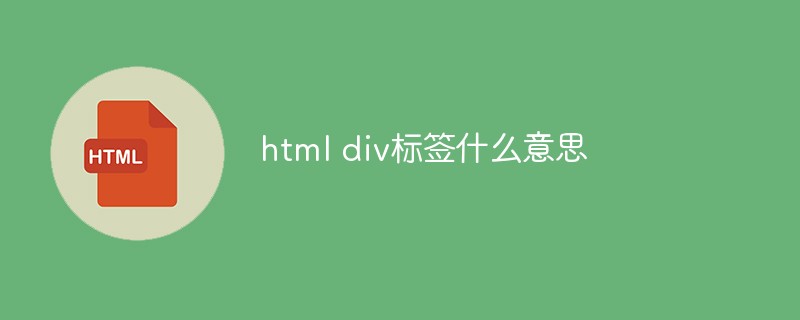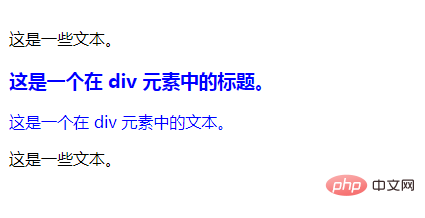
In HTML, div means "partition" and is a partition tag used to define partitions in the document, which can divide the document into independent and different parts. The div element is an element used to provide structure and background for a large block of content within an HTML document; all content between the opening and closing DIV tags is used to form this block.

The operating environment of this tutorial: Windows 7 system, HTML5 version, Dell G3 computer.
DIV tags, called division tags, can define divisions or sections (division/section) in the document, and can divide the document into independent and different parts. It can be used as a strict organizational tool and does not use any formatting associated with it.
The function is to set the placement position of words, paintings, tables, etc.
When you put text, images, or other things in a DIV, it can be called a "DIV block", or a "DIV element" or a "CSS-layer", or simply a "layer". In Chinese we call it "level".
The DIV element is an element used to provide structure and background for block-level content in an HTML document. Everything between the start and end tags of the DIV is used to form the block, and the properties of the contained elements are controlled by the properties of the DIV tag, or by formatting the block using a stylesheet.
Usage
It is not necessary to add a class or id to every
It is possible to apply either class or id attributes to the same
Example:
<!DOCTYPE html> <html> <head> <meta charset="utf-8"> </head> <body> <p>这是一些文本。</p> <div style="color:#0000FF"> <h3>这是一个在 div 元素中的标题。</h3> <p>这是一个在 div 元素中的文本。</p> </div> <p>这是一些文本。</p> </body> </html>
Rendering:

Recommended tutorial: "html Video tutorial》
The above is the detailed content of What does html div tag mean?. For more information, please follow other related articles on the PHP Chinese website!